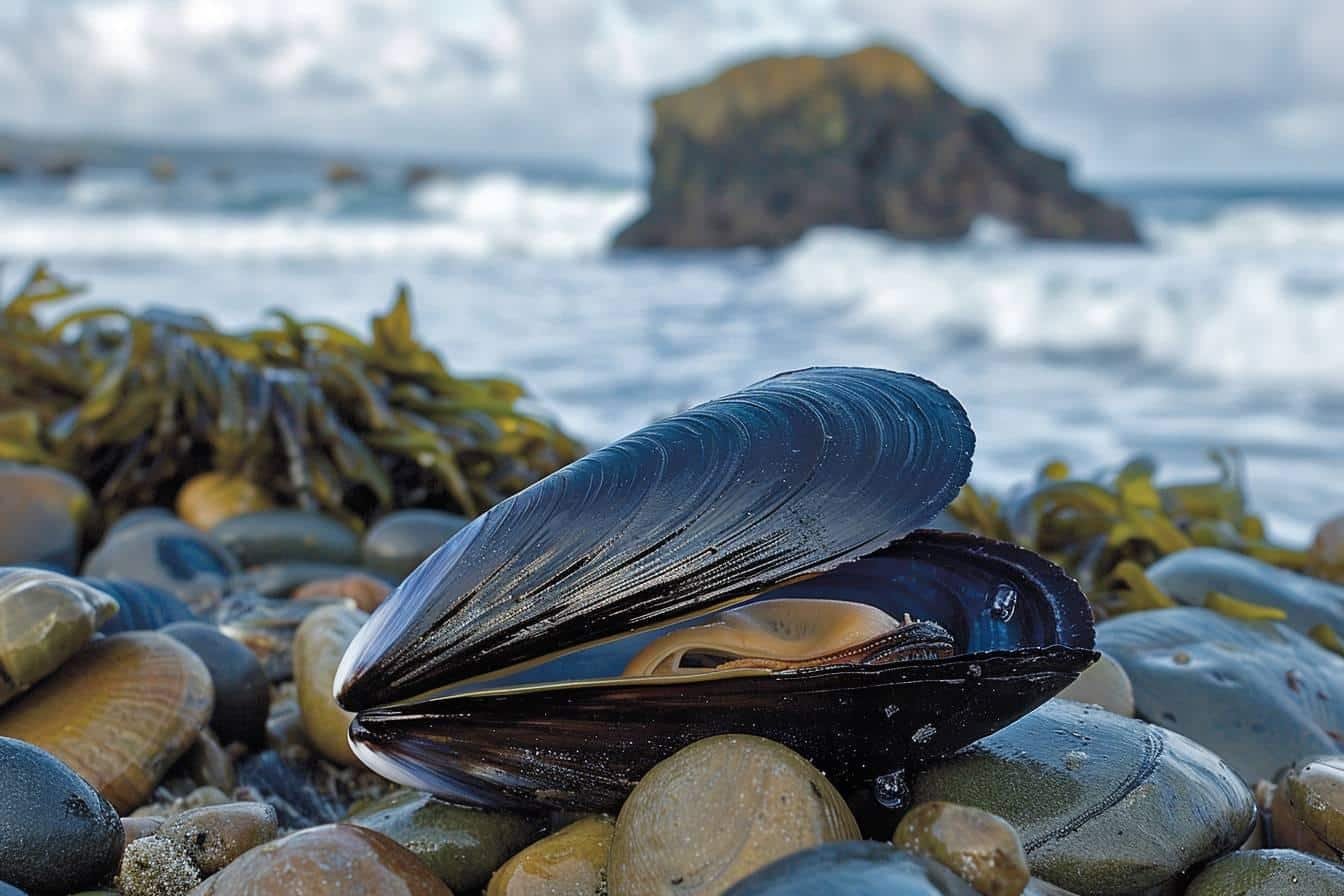Discover the fascinating biological secrets of the mussela marine mollusc essential to our culture. French mussel farmers, who are fervent producers, offer us a wealth of information about these tapacious bivalve shellfish. But how much do we really know about the anatomy of the mussel?
Reproduction of mussels
La reproduction of mussels is a fascinating, often little-known process that is essential for understanding the population dynamics of this marine mollusc. Every spring, mussels begin their reproduction period.
Reproduction takes place by emission of genital products. The females expel eggs while males release spermatozoa. These genital products are then fertilised in the open environment, rather like a great underwater dance.
Professional anecdote: during my years in the pet shop, I often saw aquariums full of mussels ready to spawn. It's impressive to see nature at work, even in captivity.
Once fertilised, the larvae become mobile thanks to their velum. It is these small ciliated structures that enable them to move around before looking for a safe place to settle. Unlike oysters, mussels can then move, even after an initial attachment.
Here is a summary table of the reproductive cycle:
| Step | Description |
|---|---|
| Release of genital products | Females expel ova, males spermatozoa |
| Fertilisation | Fertilisation in a free environment |
| Mobile larvae | Moving around thanks to velums |
| Fixing | Mounted on a support; can be moved afterwards |
The anatomy of a mussel
A mussel's anatomy comprises several parts that are essential to its survival and development. Every aspect of its body is perfectly adapted to its needs and environment.
The shell
The black, smooth shell protects the mussel's soft body. It opens and closes thanks to two powerful muscles that enable the mussel to defend itself against predators and stay closed out of the water. The mussel's mantle plays a crucial role in the manufacture of this shell and in its sensitivity to the external environment.
The foot and the byssogenic gland
The mussel has two distinctive organs: its foot and its byssogenic gland. The foot, shaped like a tongue, allows the mussel to move very slowly. As for the byssogenic gland, it produces the byssus, a set of filaments terminated by micro-suckers with an adhesive substance. This enables the mussel to attach itself firmly to different surfaces.
Vital functions
The mussel, as a bivalve filter feeder, uses its gills not only to breathe but also to capture the plankton on which it feeds. This makes it an important ecological player in filtering marine waters.

A worldwide reputation
Mussels enjoy a worldwide reputation, with two main species farmed in France: the common mussel (Mytilus edulis) and the Spanish mussel (Mytilus galloprovincialis).
The common mussel, also known as the bouchot mussel, is farmed on the French Atlantic coast, attached to wooden piles in the intertidal zone. This type of mussel is particularly prized for its tender, flavoursome flesh. French mussel farmers produce over 40,000 tonnes of mussels a year. One of my favourite anecdotes during my career was a visit to a bouchot mussel production site, where I discovered the traditional techniques of mussel farming. It's impressive to see these ropes wrapped around stakes, covered with mussels fed by the rough sea.
The Spanish mussel is much larger than its cousin. It prefers the warmer waters and rocky intertidal zones of the Mediterranean region. Both species cover considerable areas of rock exposed to the tides.
Practical advice on growing mussels
If you're an animal lover like me and would like to try your hand at mussel farming, here are a few tips:
- Choose an intertidal area with rocks exposed to the tides.
- Use wooden stakes to raise bouchot mussels.
- Keep an eye on water temperature and environmental conditions to ensure optimum growth.
Mussel farming requires a detailed understanding of their biology and environment, but is an enriching experience for anyone with a passion for marine molluscs. And if you take the plunge, you may even have the opportunity to pass on this passion, why not to visitors to a certified museum dedicated to traditional mussel farming techniques.
Ultimately, the mussel is much more than just a shellfish. They are a vital part of our marine ecosystem and a culinary delight that French mussel farmers know how to make the most of.

1 thought on “Anatomie d’une moule : les secrets biologiques de ce mollusque marin.”